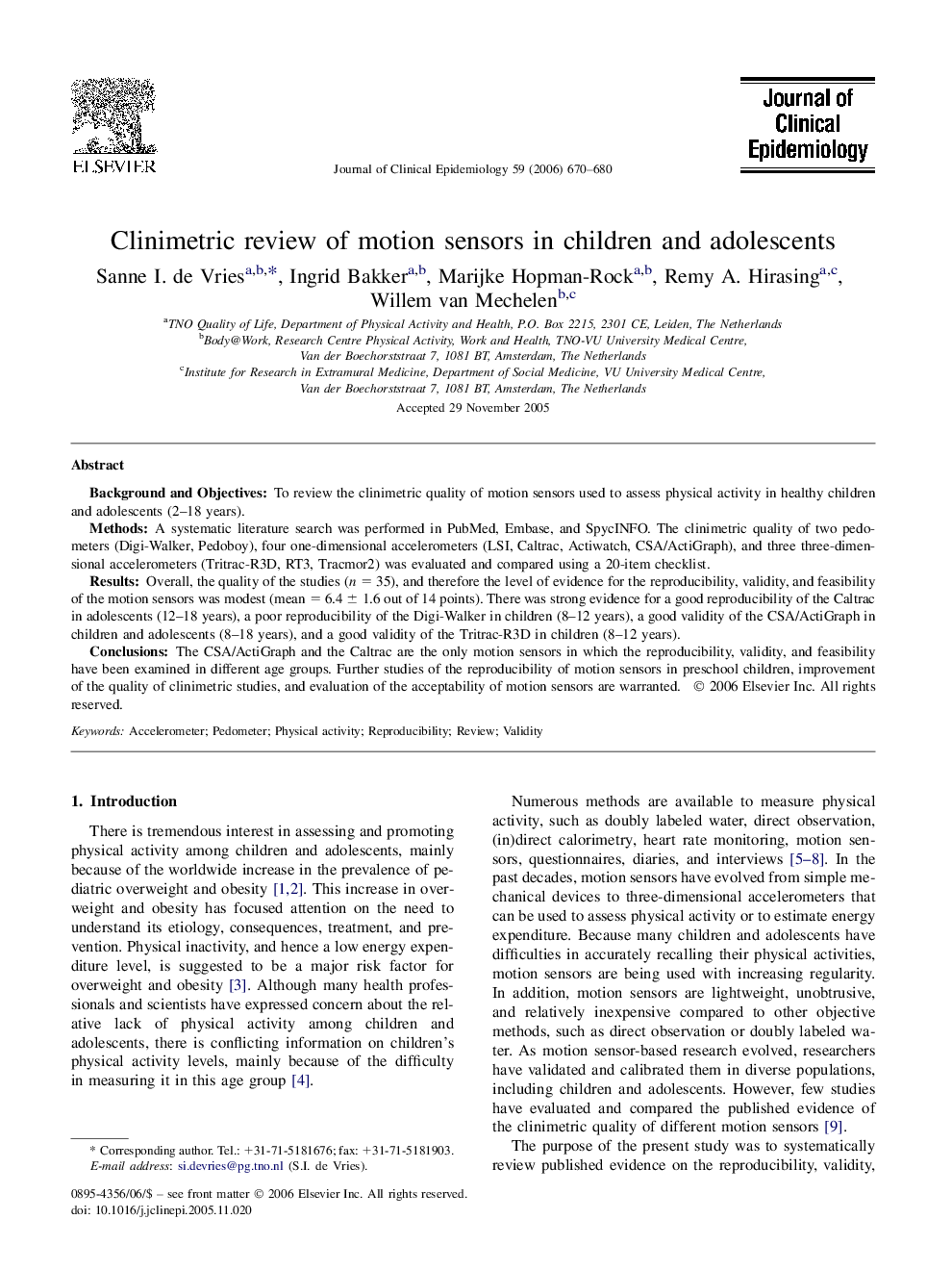| Article ID | Journal | Published Year | Pages | File Type |
|---|---|---|---|---|
| 1083949 | Journal of Clinical Epidemiology | 2006 | 11 Pages |
Background and ObjectivesTo review the clinimetric quality of motion sensors used to assess physical activity in healthy children and adolescents (2–18 years).MethodsA systematic literature search was performed in PubMed, Embase, and SpycINFO. The clinimetric quality of two pedometers (Digi-Walker, Pedoboy), four one-dimensional accelerometers (LSI, Caltrac, Actiwatch, CSA/ActiGraph), and three three-dimensional accelerometers (Tritrac-R3D, RT3, Tracmor2) was evaluated and compared using a 20-item checklist.ResultsOverall, the quality of the studies (n = 35), and therefore the level of evidence for the reproducibility, validity, and feasibility of the motion sensors was modest (mean = 6.4 ± 1.6 out of 14 points). There was strong evidence for a good reproducibility of the Caltrac in adolescents (12–18 years), a poor reproducibility of the Digi-Walker in children (8–12 years), a good validity of the CSA/ActiGraph in children and adolescents (8–18 years), and a good validity of the Tritrac-R3D in children (8–12 years).ConclusionsThe CSA/ActiGraph and the Caltrac are the only motion sensors in which the reproducibility, validity, and feasibility have been examined in different age groups. Further studies of the reproducibility of motion sensors in preschool children, improvement of the quality of clinimetric studies, and evaluation of the acceptability of motion sensors are warranted.
